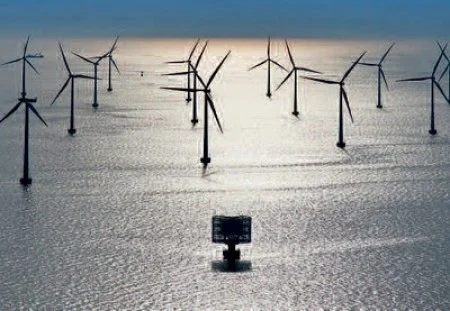We recently covered a report from Pike Research which predicts a big surge forward for offshore wind energy, estimating a growth in total installed capacity from 4.1 gigawatts to 70.1 gigawatts by the end of 2017.
It would seem, however, that not everyone is so optimistic about the direction offshore wind energy will take in the coming years.

According to a recent survey published by Price Waterhouse Coopers (PWC), offshore wind energy has a long way to go in order to prove it can represent a sustainable portion of the renewable energy mix.
The report, called “Offshore Proof,” polled “major players in the industry including developers, manufacturers and utilities firms.”
It suggests offshore wind’s technological track record and high costs remain major challenges on its path to economic success.
Apparently, although there is considerable support for major offshore wind projects expansion in Europe’s North Sea, many government bodies are split on the the pros and cons of offshore wind.
The survey shows, for example, that almost two-thirds of government bodies anticipate technological breakthroughs which will prove offshore wind power’s worth. However, the same proportion admit there is a possibility technological breakthroughs could work in the favor of other renewable energy sources which could end up pushing offshore wind power to the side.
PWC’s analysis indicates the next five years will be a crucial time for offshore wind to turn its “promise into performance.”
That said, offshore wind developers say there is just cause for optimism because European offshore wind projects are “achieving comparable levels of availability to onshore wind projects” and experiencing roughly the same amount of down-time as was expected.
Costs remain a big concern, according to the report. The question seems to be whether offshore wind can exist as a part of the power mix without subsidy in the near term. On this point, the survey respondents were mixed.
About 42% expected costs to come down while many others believe costs could go up. Part of the reasoning of the latter group, according to Ronan O’Regan, director, PwC renewables and clean tech is that “much of the cost of offshore wind power comes from heavy engineering, steel and other raw materials inputs,” and “recent trends in commodity prices suggest that these cost components will remain volatile.”
Tragic as it may be, the recent earthquake in Japan and subsequent Fukushima nuclear emergency has actually improved investor interest in offshore wind.
According to PWC, the original survey, which was conducted before the nuclear emergency, indicated that financial institutions viewed nuclear investment more favorably, while just one in ten of these investors saw offshore wind energy as more attractive.
However, a re-issue of the survey after the quake showed the same respondents had changed their tune and now looked at offshore wind as the better energy option.






